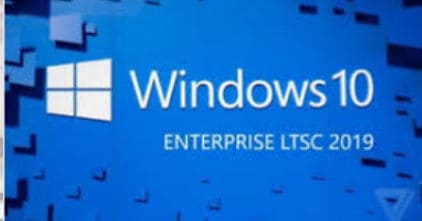Windows 10 LTSC Pros / Cons

UPDATE February 2021: Microsoft announced that the next version of Windows 10 Enterprise LTSC will be released in the second half of this calendar year (2H21) and will carry a 5-year support lifecycle, instead of the 10-year lifecycle supported with previous version. Full Microsoft announcement post here.
Now that Windows 7 is less than a year ( 250 working days and counting!) away from officially end of life, we have many organizations that are not prepared to deal with the constant cycle of updates Windows 10 brings and are looking into different alternatives. The challenges on the last released update to Windows 10, v1809, did not help these late / cautious adopter organizations that the new Windows as a Service cycle is better that the previous approach.
Some of the paths they are looking include:
- Delay the update by continue to pay for Windows 7 support beyond January 14, 2020
- Move applications environments into virtualized environments they can better control
- Windows 10 Long Term Servicing Channel (LTSC) – formerly known as Long Term Servicing Branch (LTSB)
Lately we have received many inquiries asking if organizations should choose LTSC as their base OS for all production devices. This is our point of view on this matter:
This is a bad idea and should only be reserved for very specific use cases.
Let us explain why:
LTSC is similar to Microsoft’s update model for Windows 7, with major operating system feature updates arriving approximately every three years. It has a five-year “mainstream support” phase followed by a five-year “extended support” phase, so it’s what organizations are used to, and it’s what they typically want.
Each release contains all the new capabilities and support included in the Windows 10 features updates that have been released since the previous LTSC release.
Unlike the year-and-month terminology employed to describe Windows 10 features updates (e.g. 1703 or 1809), LTSC releases are named with a specific year, such as Windows 10 Enterprise LTSC 2016 or Windows 10 Enterprise LTSC 2019, and they align to perpetual Office releases such as Office 2019.
During the life of a LTSC release, you can upgrade your devices to the next or latest LTSC release free of charge using an in-place upgrade, or to any currently supported release of Windows 10. Because the LTSC is technically its own SKU, an upgrade is required from Windows 10 Enterprise LTSC to Windows 10 Enterprise, which supports the Semi-Annual Channel.
Cons:
There are several key reasons LTSC model would be a bad approach for organizations to deploy across the organization and specially to their knowledge workers.
Some of the key reasons include:
- LTSC carries a separate, more expensive license fee than regular Service Channel
- LTSC does not keep pace with new silicon releases.
- For example, LTSC 2016 does not support Intel chips beyond the “Kabylake” generation
- LTSC may not be able to support new peripheral because the API and driver support models do not change beyond the LTSC release you deploy.
- Example: Office ProPlus, is not supported on LTSCMany ISVs do not support LTSC editions for their applications.
- LTSC does not keep pace with hardware, feature and security enhancements
- Example: Windows Defender ATP [Advanced Threat Protection]
- Independent Hardware and Software Vendor support and limitations on LTSC
- Non-security operating system fixes and enhancements may not get back-ported
- LTSC does not support ConfigMgr Express Updates
- In-Place Upgrade from Windows 7 to Windows 10 is not supported for LTSC
Bottom line:
The LTSC is designed for devices and use cases where features and functionality will not change. It provides 10 years of security servicing to a static Windows 10 feature set.
Further reading / References:
- Microsoft Ignite 2018 Video: THR3006 – The pros and cons of LTSC in the enterprise
- Microsoft Makes Case Against Windows 10’s ‘Long-Term Servicing’ Branch


